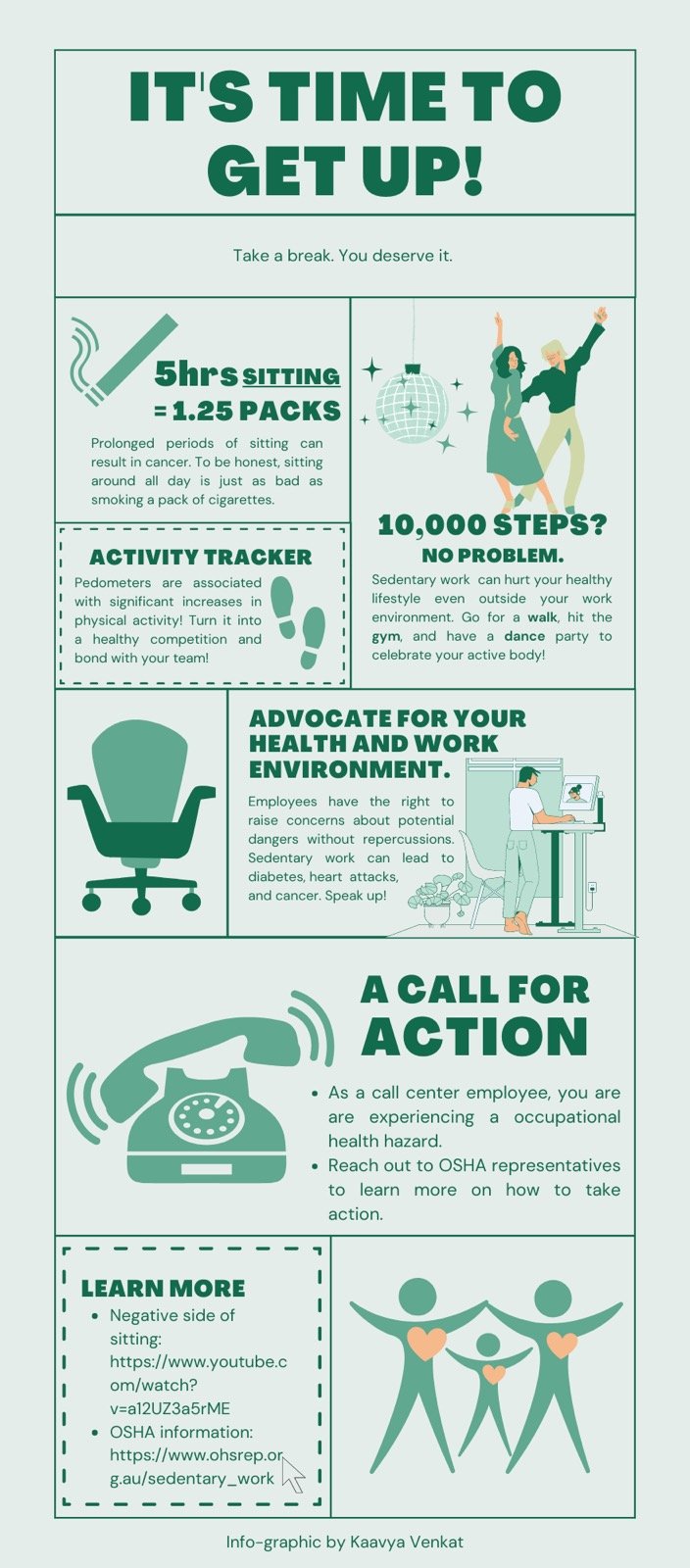Sedentary Work: An Occupational Health Hazard
Environmental health is not merely greenery and nature. While the first image that comes to mind while thinking about environmental health hazards might be related to climate change, it is also important to consider the environments we engage in our everyday lives. Within the US, more than 30 million workers hold professional positions that involve long periods of sedentary behavior. This accounts for almost 10% of the country’s population.
With the rise of new technology, we are facing an era where everything is becoming easier for humans. But this is at the expense of employees working long hours in sedentary conditions. Studies synthesized by the Mayo Clinic provide evidence for how prolonged periods of inactivity lead to negative health outcomes, which are comparable to negative health outcomes of obesity and smoking.
Office and administrative workers spend approximately 80,000 hours seated, and 80 percent of those who work at a computer every day suffer from shoulder pains, neck strains, eye problems, and headaches. While some large tech companies such as Apple have taken action by implementing standing desks and better work-life balance, call center employees still face this burden.
Hazard Identification
While sedentary work seems harmless to the eye, it is considered an occupational hazard. Sedentary work should not be confused with inadequate physical activity. Studies in 2017 reported that the risk of death from sedentary activity may be higher than the risk of death from smoking. Furthermore, health concerns associated with extended sitting persist even if a person exercises intensely every day, demonstrating that excessive sitting and physical inactivity are distinct.
Exposure to sedentary work environments is personal and based on each individual’s metabolic rate. According to the Sedentary Behavior Research Network, “sedentary behaviors are typically defined by both low energy expenditure and a sitting or reclining posture.” The National Institute for Occupational Safety and Health (NIOSH) proposes an integrated strategy for tackling sedentary occupational health hazards through its Total Worker Health (TWH) Program. TWH uses a framework that acknowledges work as a determinant of health that includes stress and sedentary behavior. Offering the option of standing or walking meetings, more breaks, and sit-stand workstations are some of the suggested solutions.
Call to Action
As we continue to digitalize society, there is a growing need for office-based workers in all kinds of industries. This makes sedentary occupational hazards a bigger threat, especially during a time when the pandemic has forced many workers to work remotely with prolonged periods of physical inactivity. But this type of work is not new for call center workers. Workers who experience sedentary work lifestyles for 20 years are said to have two times the risk of premature death compared to those who are physically active.
Workplaces must acknowledge this and encourage breaks for physical activity. Sedentary work impacts activity and health patterns outside of work, which should inform public health guidelines for all workers.

